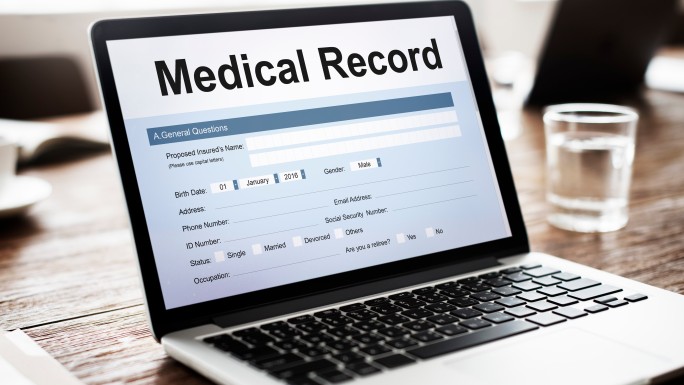What is IoMT? All You Need To Know
The world of medicine is undergoing a revolution, driven by an explosion of interconnected devices. Statista predicts that the number of Internet of Things (IoT) devices worldwide will reach nearly 30 billion by 2030, and a significant portion of this growth will be in the healthcare sector. This is the exciting potential of IoMT, a rapidly growing ecosystem with immense benefits for both patients and healthcare providers.
In this blog, we'll explore how these smart devices are used, the different components of the IoMT ecosystem, and the immense benefits it offers.
I. Definition
IoMT stands for the Internet of Medical Things. It refers to a network of interconnected devices, applications, and systems that are used in healthcare and medical industries to collect, transmit, and analyze health-related data.
II. Types of IoMT
Wearable IoMT
This category includes smartwatches, blood pressure cuffs, glucose monitors, heart rate trackers, and fitness bands. These devices are worn on the body and collect real-time health data to help people improve their well-being and receive cost-effective care.
Home-based IoMT
This category covers various medical devices used at home, often in conjunction with hospital care. Examples include test kits, first-aid kits, treatment devices, baby monitors, feeding pumps, infusion pumps, and ventilators. These devices connect to the internet, allowing communication with healthcare providers and potentially even hospital-based equipment.
Hospital-based IoMT
Hospitals rely on a range of sophisticated medical equipment to provide the best care for all types of patients and emergencies. This "smart" equipment includes surgical tables, anesthesia machines, electrosurgical systems, and defibrillators.
III. IoMT ecosystem components
The Internet of Medical Things systems includes four architecture layers: the perception layer, the connectivity layer, the processing layer, and the application layer.
Perception Layer
- This layer comprises the various smart medical devices that act as data collectors. Examples include wearable health trackers, ingestible sensors, pacemakers with remote monitoring capabilities, and diagnostic equipment.
- These devices are equipped with sensors to gather physiological data like heart rate, blood pressure, glucose levels, and even brain activity.
Connectivity Layer
This layer ensures seamless data transmission between the perception layer and the processing layer. It relies on various communication technologies like:
-
- Wireless networks: Bluetooth, Wi-Fi, cellular networks
- Gateways: Devices that act as bridges, aggregating data from multiple devices and translating protocols for smooth cloud integration.
Processing Layer
This layer is the brain of the IoMT system, responsible for storing, managing, and analyzing the collected health data. It typically involves:
-
- Cloud middleware: These platforms provide secure storage for the massive amounts of medical data generated by IoMT devices.
- Data analytics tools: Employed to extract meaningful insights from the collected data, identifying trends, potential health risks, and enabling proactive care.
Application Layer
This layer interacts directly with the end users, providing actionable insights and functionalities. Examples include:
-
- Software applications for healthcare professionals to monitor patients remotely, analyze trends, and make informed decisions.
- Mobile apps for patients to view their health data, receive medication reminders, and communicate with healthcare providers.
- Control interfaces for users to adjust settings on their medical devices or trigger specific actions based on the data analysis.
IV. Benefits of IoMT
Firstly, IoMT improves patient care by enabling remote monitoring. Vital signs and health data can be tracked continuously, even outside of a hospital setting. This allows for earlier detection of potential issues, leading to faster diagnosis and more informed treatment decisions. Imagine a patient with heart disease – an IoMT device can detect an irregular heartbeat and send an alert to their doctor, potentially preventing a serious event.
Secondly, IoMT enhances chronic disease management. By continuously collecting data, healthcare providers gain valuable insights into a patient's condition. This allows for medication adherence monitoring and remote adjustments to treatment plans, leading to better management of chronic diseases like diabetes or heart failure. For example, a diabetic patient can use a smart insulin pump that tracks blood sugar levels and automatically delivers precise dosages.
Thirdly, IoMT increases patient empowerment. With access to their own health data through user-friendly applications, patients can self-monitor their health and gain a deeper understanding of their well-being. This fosters a sense of ownership and allows individuals to participate actively in their healthcare journey. Imagine someone with sleep issues – an IoMT sleep tracker can provide data on sleep patterns, empowering them to make informed lifestyle changes to improve their sleep quality.
Finally, IoMT offers the potential for cost savings in the healthcare system. Early detection and intervention through remote monitoring can reduce hospital readmission rates. Additionally, improved resource allocation becomes possible by enabling remote care, freeing up hospital resources for patients requiring in-person attention.
V. Challenges and Concerns
1. Data Security and Privacy
Potential Risks and Vulnerabilities: IoMT devices collect sensitive health data, making them attractive targets for cyberattacks. Data breaches can expose patients' personal information and compromise their health.
Importance of HIPAA Compliance and Other Regulations: Strict regulations like HIPAA (Health Insurance Portability and Accountability Act) govern data privacy in healthcare. IoMT systems must adhere to these regulations to ensure data security and patient trust.
![]()
2. Interoperability
Challenges in Integrating Diverse Devices and Systems: The healthcare landscape is filled with devices from various manufacturers. These devices may use different communication protocols, making it difficult for them to share data seamlessly.
Need for Standardization: Standardized data formats and communication protocols are crucial for the smooth integration of IoMT devices and applications within a healthcare system. This would ensure all devices can "talk" to each other and share data effectively.
3. Cost and Accessibility
High Initial Costs: Implementing and maintaining IoMT infrastructure requires significant investment. The cost of devices, software, and secure cloud storage can be a barrier for some healthcare institutions.
Efforts to Make IoMT Accessible to All Patients: Not everyone has access to smartphones or the internet, potentially creating a digital divide in healthcare delivery. Efforts are underway to develop affordable and accessible IoMT solutions for all patients.
Conclusion
In brief, The Internet of Medical Things (IoMT) is revolutionizing healthcare by offering real-time data, improved patient outcomes, and more efficient care delivery. While challenges like data security and accessibility exist, IoMT's potential for a more connected, proactive, and personalized healthcare experience is undeniable. As technology advances, IoMT has the power to transform the future of medicine for both patients and providers.
See Also:
Wearable Devices in Healthcare: Benefits and Drawbacks
Understanding remote patient monitoring system: functions and technology





